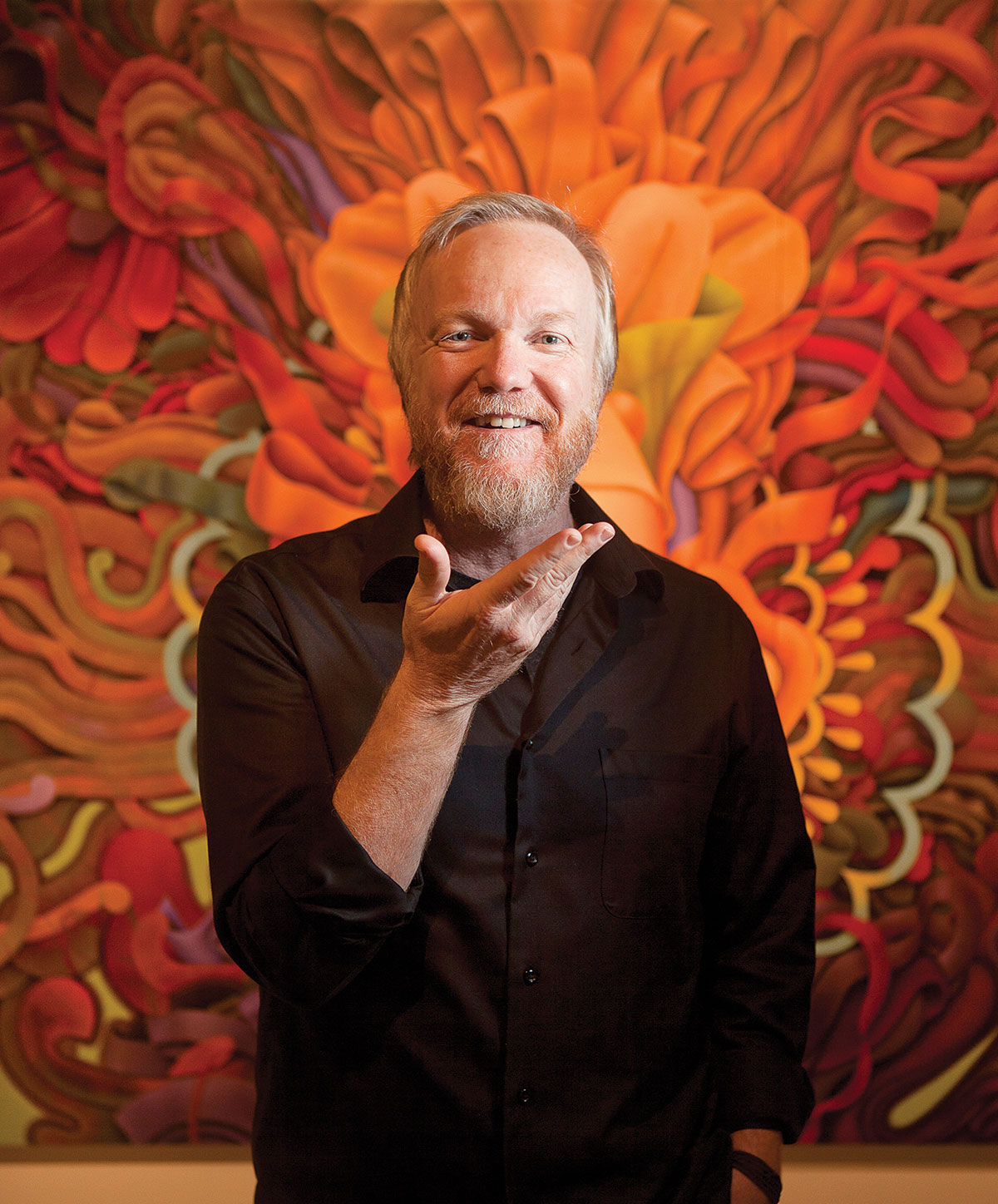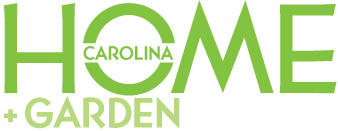
Looking like a cross between actors Kiefer Sutherland and the late Phillip Seymour Hoffman, and unusually affable for a visual artist, Daniel Nevins works in a high-ceilinged, light-saturated house in North Asheville. On a late autumn day, the oil painter, long beloved — and internationally celebrated — for his figurative work, with its highly stylized, folkloric characters, talks theology, family dynamics, and the explosion of Western North Carolina.
“It’s hard to recognize downtown anymore,” acknowledges Nevins, who moved from Florida in the 1990s and remembers a more intimate Asheville: an arts scene glued together by edgy camaraderie. He is arguably the most successful artist to emerge from this era, but still seems mildly amazed by that fact.
Nevins grew up the youngest child, by many years, in a large family. “That relative isolation gave me a certain freedom to break away from what my siblings were doing,” says Nevins. The artist’s background is Irish Catholic; nevertheless, he was the only person considered to illustrate Amy Erlich’s With a Mighty Hand: The Story in the Torah (Candlewick Press, 2013). The book is a rich depiction of the first five books in the Hebrew Bible — Genesis, Exodus, Leviticus, Numbers, and Deuteronomy. Sometimes called the Book of Moses, it’s what Christians refer to as the Old Testament.

Candlewick wanted a new look, though, picturing a hip, emotionally resonant Torah: a vision accomplished in both the text and images. Nevins depicted his characters with ethnically appropriate skin, eyes, and hair — a move favorably noted by many critics, including in an article in the New York Times Review of Books. The “laughing Sarah” of Genesis, marveling when told she will bear a child again in her elderly years, appears deeply wreathed in wisdom, and in full control. Joseph’s “coat of many colors” is refashioned as his “ornamental tunic,” and in Nevins’ hands, the famous garment flows like lava with a cosmic, nearly psychedelic aura.
The artist settles a profound compassion over all of his faces, even when the faces are presented en masse, as in the wondering crowd of “Moses Talking to the People.” His animals, too, are thoroughly soulful, most notably “Ram Caught in the Thicket.” Destined to be sacrificed in place of Isaac, the woolly unfortunate oozes injured dignity. Even the expressions of the frogs from the plague in Exodus, shown piled on top of each another, dazed and confused, prompt sympathy: they look like they never asked for such madness.
Nevins is blessed with a memory both spiritual and acute. His own genesis story is rare, powerful: declared clinically dead after a 1960s-era Cesarean delivery, he was brought back to life after 20 minutes out of the womb, and recounts the incident on his website’s blog: “It wasn’t talked about in my family … but I remember that day … the negotiating with unseen guides. I did not want to be here, [but] they told me to trust them. It wasn’t a near-death experience, because I did in fact die. It was an experience of choosing to live, with great reluctance and a heavy heart. But I’m happy I made that choice.”

A few years ago — actually April 6th, 2009, by his exact account — Nevins experienced another beginning. He found a “new muse” when he veered from his decade-plus of success in figurative painting and started making more abstract work. The resulting gigantic canvases, their creation eventually boosted by a $10,000 Fellowship Grant from the North Carolina Arts Council, were paired with the Torah paintings in a show last fall at the S. Tucker Cooke Gallery at UNCA.
The figurative works were arranged clockwise around the gallery, in the order they appear in print. “They depict the world we live in and the stories we tell each other about who we are and where we come from, the world we see and touch every day,” explains Nevins.
Meanwhile, the large abstract pieces were shown in the center of the gallery. “They depict our inner world, that floating world, that inner landscape we each carry inside of us,” says the artist. “It’s probably meaningful that these paintings are so much larger — that our inner world affects so much how we perceive the outer world that we encounter every day.”
Titled only by number to further discourage implied narrative, the paintings are colossal, measuring up to ten feet long in one case. “Number 4,” at 42×48 inches one of the smaller abstracts, is painted on a piece of wood arched like a doorway. It’s an important symbolic invitation to this new world: sensuous organic forms in a bloodletting of revelatory colors.
“I began going for a more direct visceral emotion, one that wasn’t conveyed by story — one where viewers didn’t need a surrogate for themselves in the painting to have an emotion that they could then relate to. Or not.”
“Number 1” appears like an unfurling flower or a vivisected heart: striated, intimate reds nourish a spray of indigo poison berries, or perhaps eyes. In “Number 15,” a 60-by-120-inch diptych, earth-toned worms (or maybe fern tendrils, or maybe wisps of storm clouds) roil away from a sacred-gold illuminated center that could be an umbilical cord or simply a dangerous, delighted notion.
“The viewer has to stand in front of these shapes and colors and decide for themselves, given their own personal history, what is being communicated,” says Nevins. “They are like Rorschach Tests. I’m going for the sublime, the ineffable.
“Of course, being that we are the story-telling, pattern-seeking primates that we are, one can’t help but try to find ‘meaning’ in these shapes and colors. What construction of meaning comes up for each viewer can be instructive as to the workings of their own psyche.”
“With A Mighty Hand: The Story in the Torah” is available in Asheville at the UNCA Bookstore and at Malaprop’s Bookstore. To learn more about Daniel Nevins and his work, see www.danielnevins.com.
